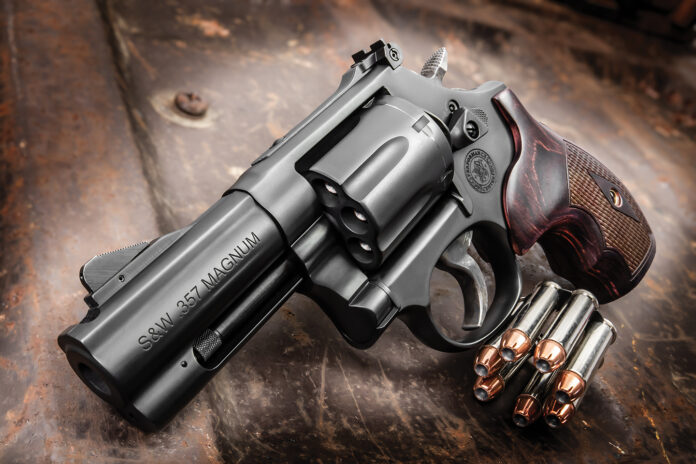Smith & Wesson’s Performance Center 586 L-Comp
By: Massad Ayoob
With an integral compensator to reduce .357 Magnum recoil, this seven-shooter is designed for concealed carry and self-defense
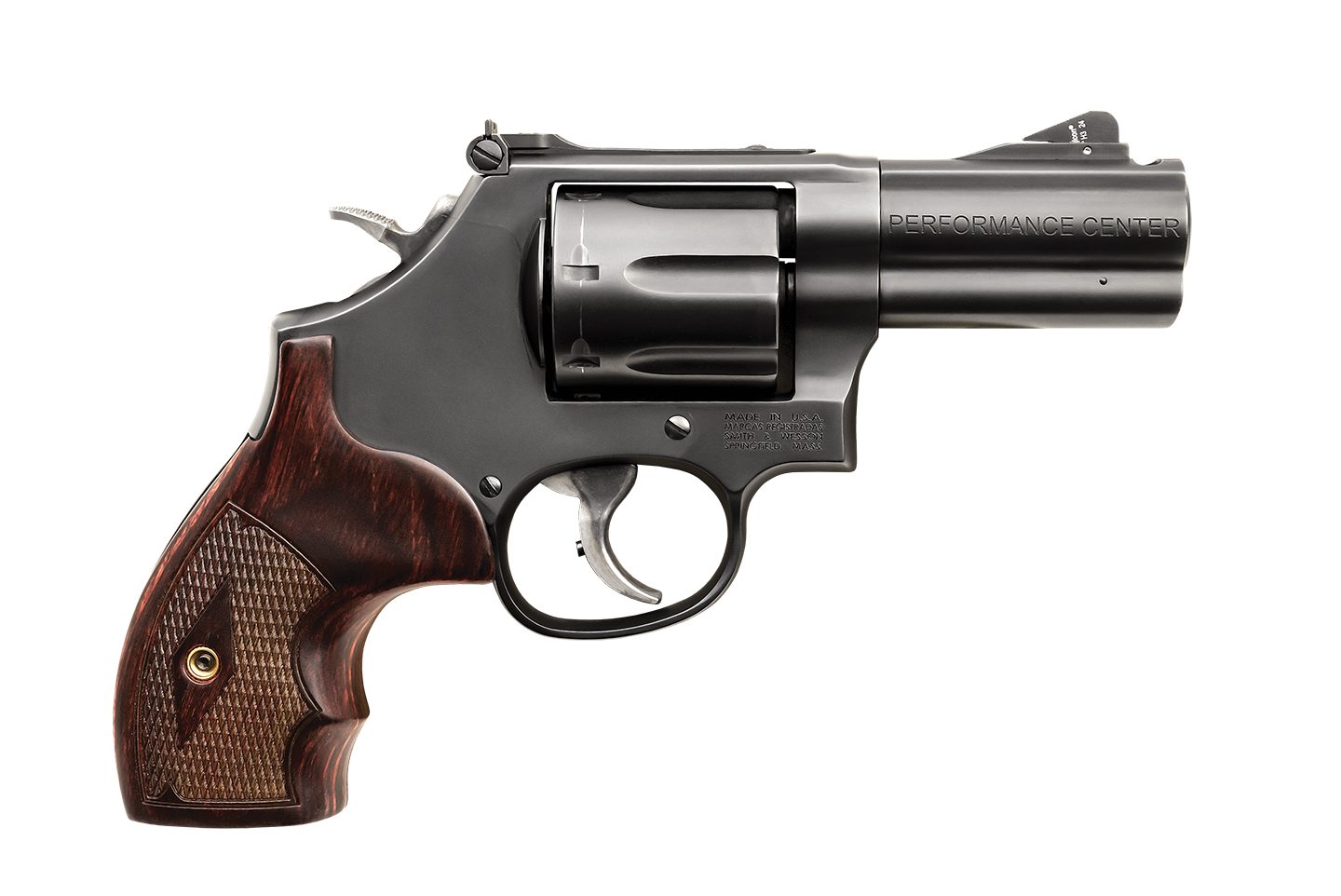
The “586 L-Comp” comes from Smith & Wesson’s Performance Center. It’s a seven-shot revolver in blue steel with a flat finish. Its three-inch barrel is very concealable in an outside-the-belt (OWB) holster, aided in that by the round butt configuration. The adjustable sights are S&W’s tried and true Micro style, and the front sight is ramped for quick draw and serrated to prevent glare, with a small Tritium night sight dot. The sight picture is what generations of S&W revolver shooters are accustomed to.
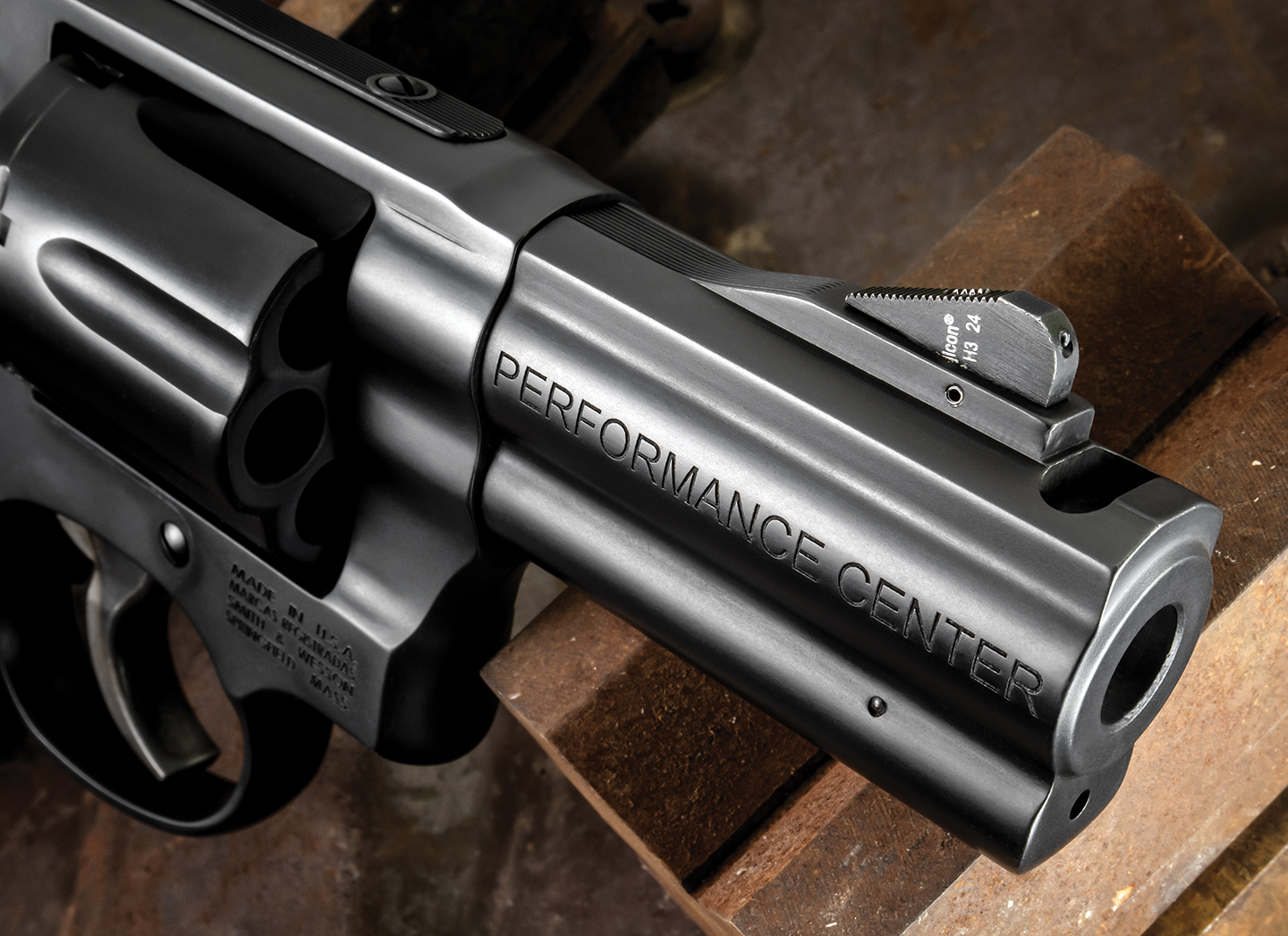
It comes with the internal lock that S&W aficionados hate, but that caused no problem in our testing. The trigger surface was smooth and relatively narrow, ideal for double-action shooting and no impediment to precise single-action firing. For fast reloads, the cylinder is cut for moon clips, two of which came in the box.
As its name implies, this is an L-frame revolver in S&W-speak, in other words, roughly a .41 frame. The cylinder is the same width as a Colt Python or Ruger GP-100. That makes it capable of accommodating a seventh firing chamber. Its grip frame will accept stocks for the smaller K-frame (.38 frame) guns and has about the same trigger reach, ideal for all but the smallest hand sizes.
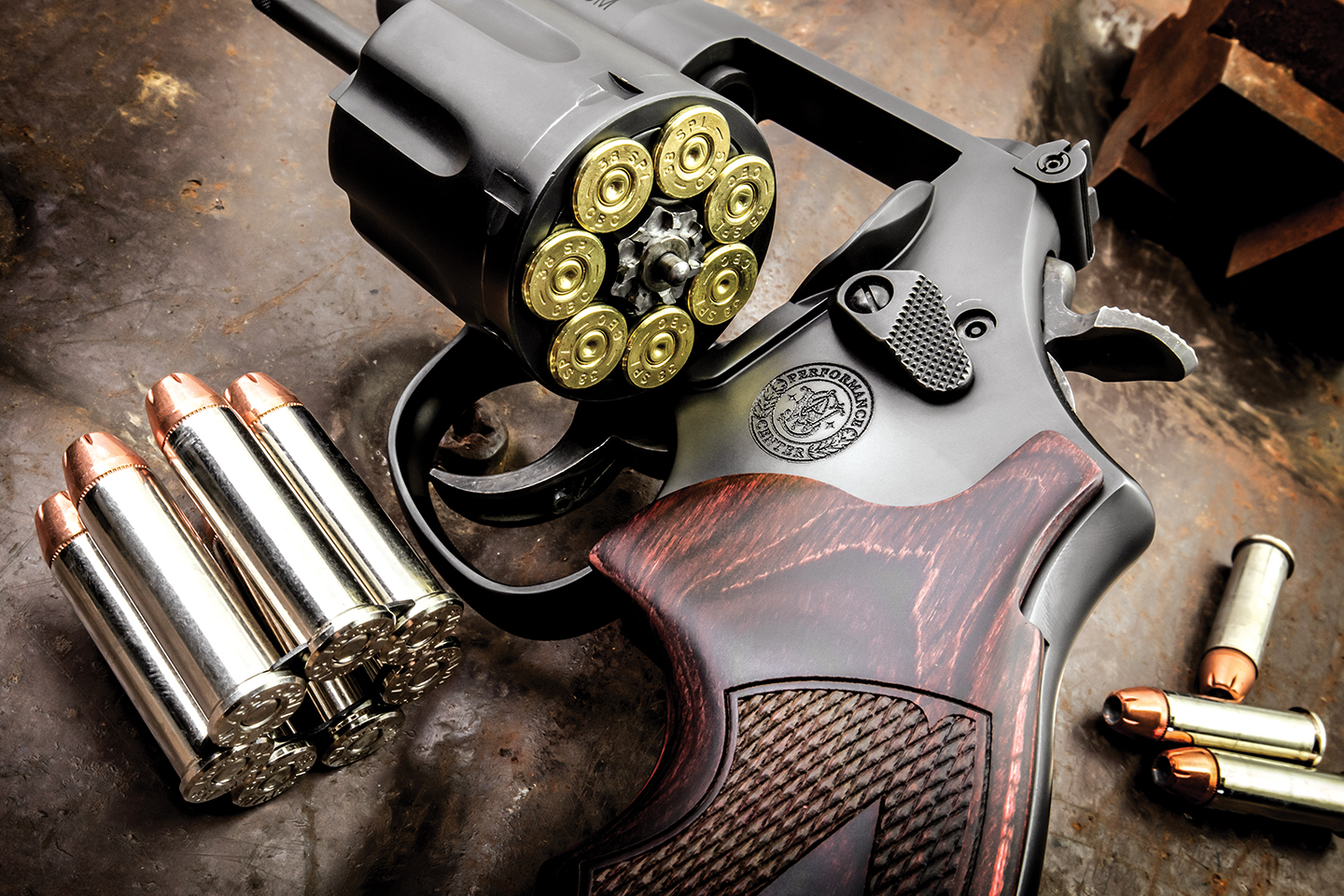
On the Range
Single-action pull was sweet, in the four-pound range, and frankly, it felt lighter. Double action pull averaged in the high eleven-pound range. That sounds heavy, but really, you don’t need “light” in a trigger pull so much as you need “smooth.” Our test sample had a little hitch at the beginning of the double action pull, which became unnoticeable the faster we ran the gun.
That heavy pull is not a bad thing when you’re busting Magnum primers. I had recently bought a thousand rounds of MagTech 158 grain .38 Special and, for the first time in a long time, shooting that brand, had light-hit misfires and even dead rounds in some of my other revolvers. The 586 L-Comp fired them without issue, every time. Firing pin hits were solid and centered on the primers. The cylinder release was stiff at first but smoothed out with live- and dry-fire work.
This Performance Center gun is fitted with a trigger stop on the back of the trigger to reduce backlash, that is, rearward movement after the sear has released and the hammer is on its way to the primer.
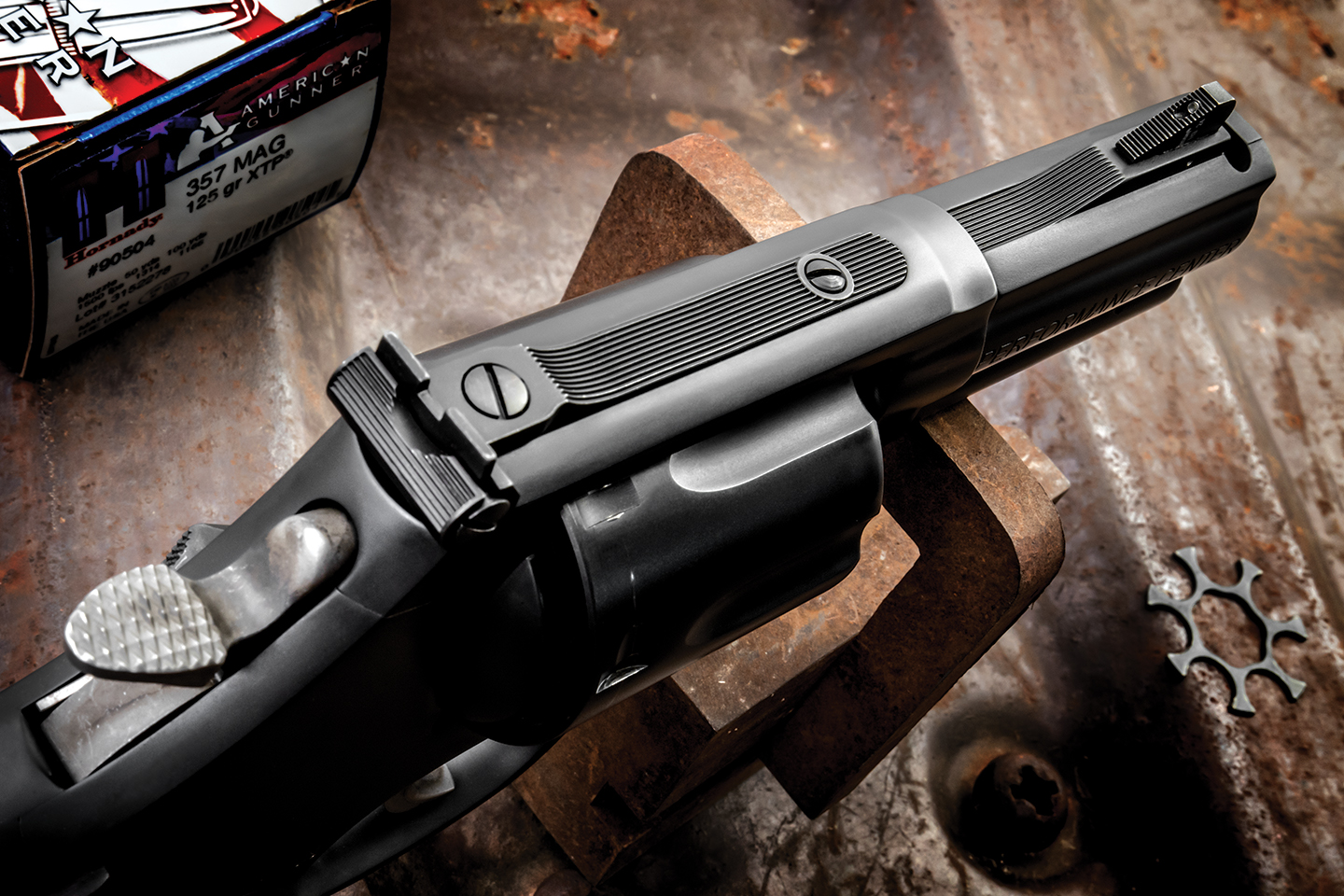
The firing chambers were well polished, and even high-pressure rounds ejected smoothly all the time, every time. With a three-inch barrel that encompasses the built-in recoil compensator, this revolver has a full-length ejection rod. We never had a spent casing hang fail to clear the chamber when we wanted it out. This PC gun’s front lug is on the cylinder yoke instead of the end of the ejector rod.
Accuracy? Firing single action from a Matrix rest on a concrete bench from 25 yards, the L-Comp delivered its best group with a round that pretty much set the standard for stopping fights with very few shots back in the police service revolver days. Federal’s 125-grain semi-jacketed hollow point, rated for 1450 feet per second from a four-inch duty gun’s barrel, plunked five shots into 1.65″, measuring center to center between the farthest-flung bullet holes. The best three hits in the group – which, if there are no called flyers, factors out unnoticed human error enough to pretty much duplicate what all five would have done from a Ransom machine rest – clustered in only eight-tenths of one inch.
158-grain Remington all-lead semi-wadcutter hollowpoints, perhaps the best performer in .38 Special +P loads “back in the day,” wasn’t as tight, nor was even Federal Match 148 grain wadcutter target ammo, but they were more than accurate enough for self-defense work. “Best three” clusters measured 1.8” for the Remington +P FBI loads and 1.10” for the Federal Match wadcutters. Many credentialed experts in terminal ballistics feel that wadcutter load is a good choice in a .38 Special because penetration is adequate, it cuts a full-diameter hole through flesh, and, of course, the extremely mild recoil promotes accurate shooting, particularly from awkward positions.
The bad news was that the 25-yard group hit about five inches left and seven inches low from point of aim. A quick analysis showed that the gun came out of the box with the rear sight screwed all the way down, and the rear sight leaf left of center in the barrel of the adjustable sight.
The good news again, though, is that it’s an adjustable rear sight. Still, while the gun gets a big point for grouping capability, it loses a point because it was apparently factory-tested for function and not for point of aim/point of impact sight-in. For the money this revolver costs, I would have expected the latter to have been done.
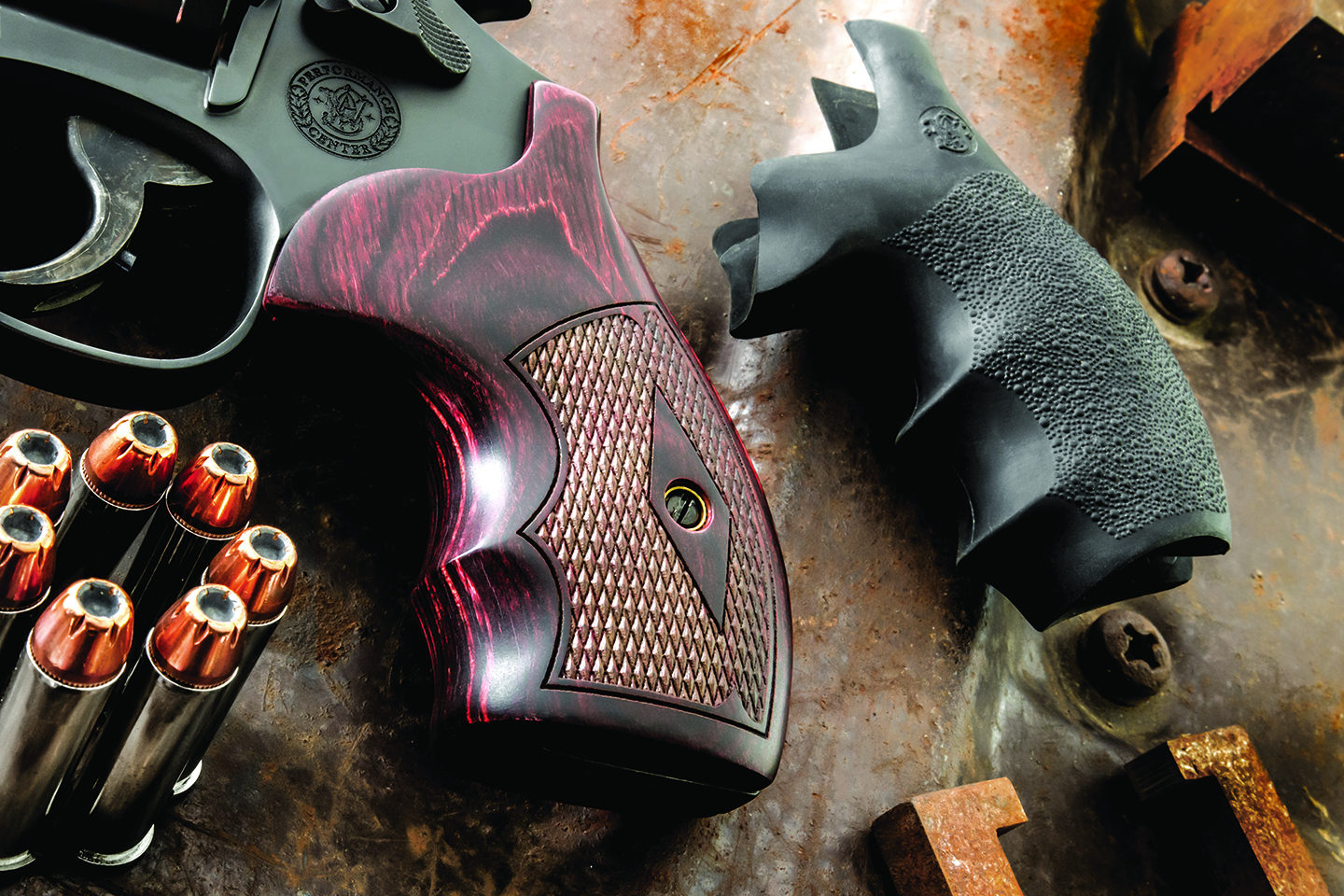
About the Compensator
In two words, it works! And it works in two ways. The opening on the top vents violently expanding gases upward, helping to reduce muzzle rise. Yeah, I hear you, that’s pretty obvious. What’s less obvious until you examine one up close is that the integral compensator also reduced rearward recoil. As the bullet passes through the appropriate-size muzzle, those expanding gases hit the internal front wall of the comp, pushing the gun forward and putting the “compensate” in “compensator.”
The gun doesn’t pull forward upon recoil, but the “kick” is definitely mitigated. Felt recoil and muzzle rise are distinctly less in this gun than my same-size 2.5″ barrel stainless version, the Model 686.
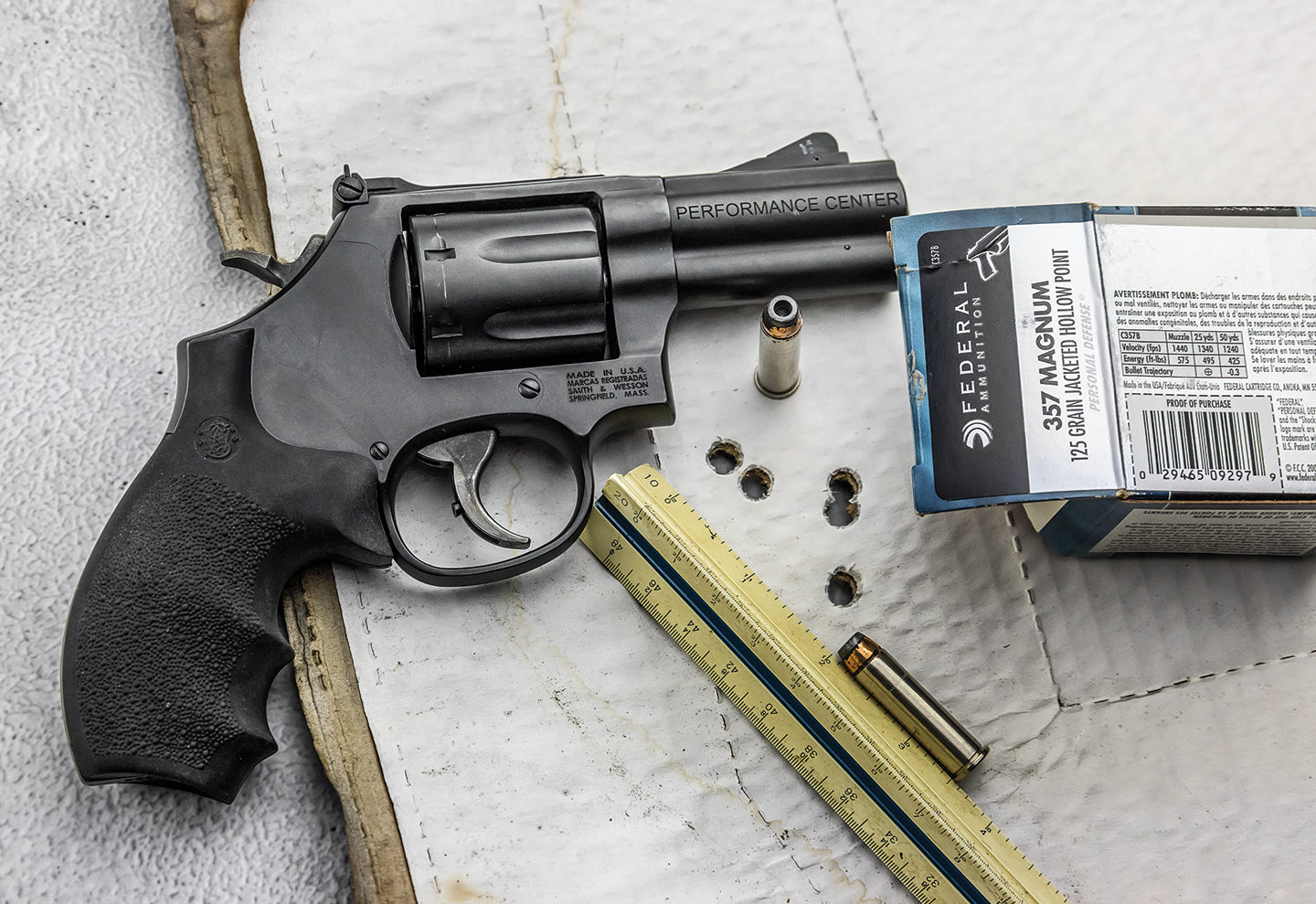
Another element of improving controllability is grip configuration. Our test revolver came with slim rosewood stocks that were handsome and fine for carry, but did not mitigate recoil. The petite female on the test team and a six-foot male both found recoil to sting at the proximal joints of thumb and forefinger with +P .38. My own arthritic hand could handle the +P, but it wasn’t especially enjoyable. With .357 Magnum, however, “Bang-bang-bang” turned into “Bang ouch-bang ow-bang dammit!”
Undoubtedly seeing this coming, S&W includes a set of softer Hogue round butt concealment grips in the heavy-duty plastic gun case. We put those on, and it made a huge difference. Even though the backstrap was still exposed, the high “horns” of rubber protected the joints and made this .357 Magnum fun to shoot. If I bought this gun, the wooden grips for “show” would live in the gun box, and the Hogues for “go” would live on the gun.
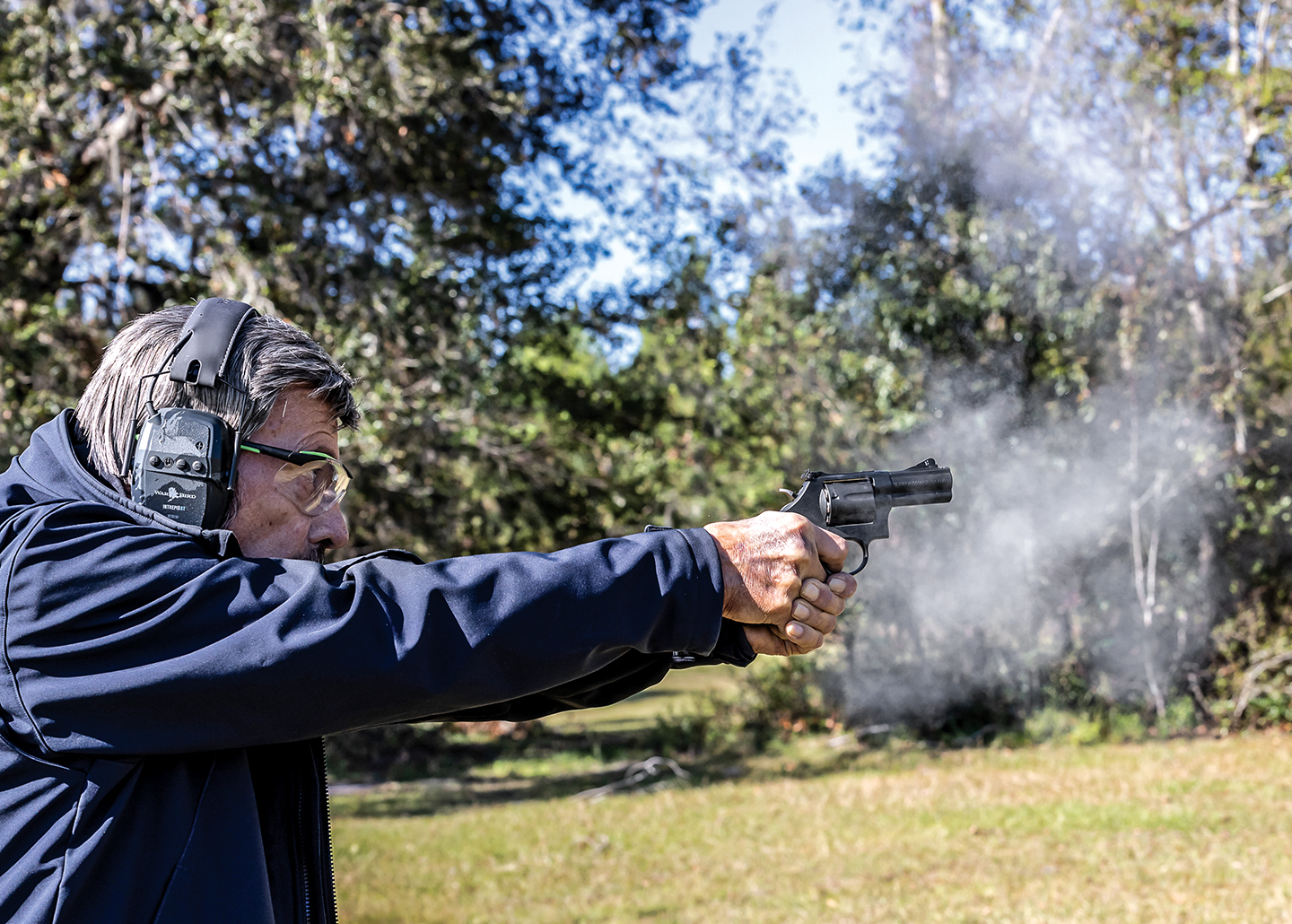
Carrying
I wore this gun for a day in a Galco Yaqui Slide leather holster. The barrel was long enough to bear on the hip and keep the gun’s butt from leaning out and “printing” under the concealment garment. I found no sharp edges or other discomfort/negative concealment factors.
Perks and Quirks
Downsides? The double-action trigger pull was certainly usable but not truly spectacular. Given this gun’s price point, I would have expected it to have been sighted in before it left the factory.
Of course, the seventh shot is an advantage in a defensive revolver. Before our readers who carry 18-shot 9mm autos roll their eyes at that, consider: this seven-shot revolver carries 116% the payload of the traditional six-shooter of the same size. It’s all relative. None of us would turn down a 16% increase in health, life expectancy, or income, and 16% can likewise be important for a revolver person’s on-board ammo reservoir.
Reliability was 100%, even with particularly hard primers. And, of course, the other revolver advantages were present: less dependence on lubrication, the ability to fire every shot at muzzle contact without the gun “going out of battery” and failing to fire, and ease and simplicity of loading and unloading.
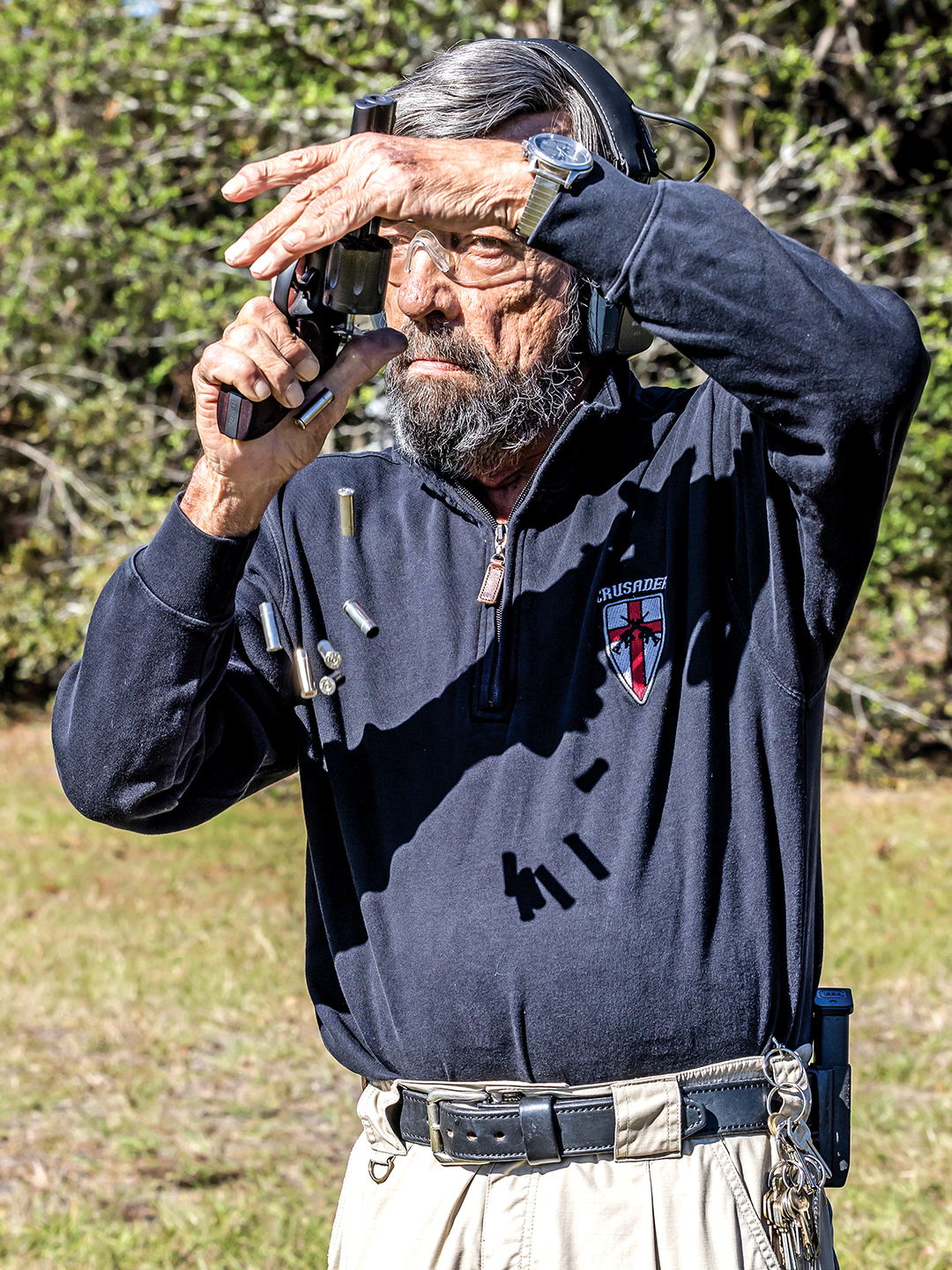
See the Smith & Wesson Performance Center 586 L-Comp at your nearest dealer ($1,439), or for more information, contact Smith & Wesson; Tel: (800) 331-0852; Web: www.smith-wesson.com.
Specifications:
Action: DA/SA
Caliber: 357 Magnum
Barrel Length: 3 inches
Overall Length: 8 inches
Width: 1.55 inches
Height: 6 inches
Weight: 36.2 ounces
Finish: Flat blued
Sights: Tritium front; Adjustable rear
Capacity: 7
MSRP: $1,439.00















